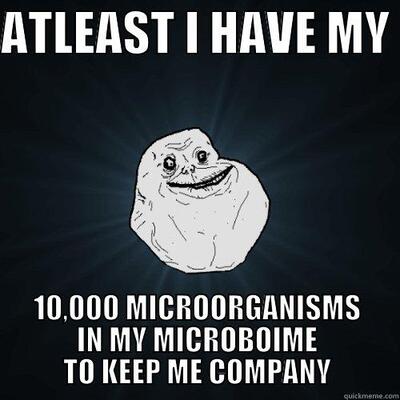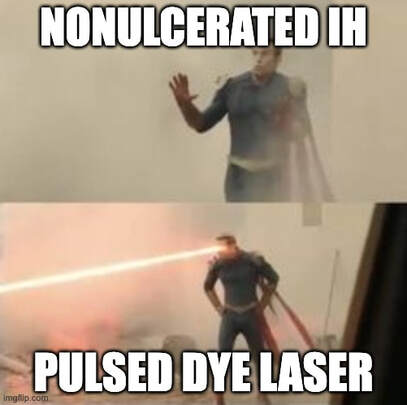nineteenth issue
october 5, 2022
SK(IN DEPTH) SCOOP
Dupixent: the first FDA approved therapy for prurigo nodularis
Just this week Dupixent (dupilumab), a well known therapy for the treatment of atopic dermatitis, became the first FDA approved therapy for prurigo nodularis (PN). Although PN is a relatively rare disease, it presents with hard nodules on the skin that can cause patients unbearable itch and pain. The FDA’s approval of Dupixent for this new indication is supported by the results of two randomized controlled trials, PRIME and PRIME2.
Is Dupixent effective at treating PN?
Is Dupixent safe when used for treating PN?
Main takeaway: Dupixent is now the first and only FDA approved therapy for PN. The approval of the drug for this indication has the potential to dramatically improve the lives of PN patients who might otherwise suffer from disease driven itch, burning, and pain.
Just this week Dupixent (dupilumab), a well known therapy for the treatment of atopic dermatitis, became the first FDA approved therapy for prurigo nodularis (PN). Although PN is a relatively rare disease, it presents with hard nodules on the skin that can cause patients unbearable itch and pain. The FDA’s approval of Dupixent for this new indication is supported by the results of two randomized controlled trials, PRIME and PRIME2.
Is Dupixent effective at treating PN?
- As reported in the PRIME and PRIME 2 trials…
- After 12 weeks, 44% and 37% of individuals treated with Dupixent experienced a reduction in itch compared with 16% and 22% of individuals in the placebo group
- After 24 weeks, 48% and 45% of patients treated with Dupixent achieved clear skin compared with 18% and 16% of individuals in the placebo group
Is Dupixent safe when used for treating PN?
- Similar incidences of adverse events were experienced in the Dupixent and placebo groups
- Adverse events that were more common in the Dupixent group included nasopharyngitis, conjunctivitis, herpes infection, dizziness, muscle pain, and diarrhea, though incidences were still low
Main takeaway: Dupixent is now the first and only FDA approved therapy for PN. The approval of the drug for this indication has the potential to dramatically improve the lives of PN patients who might otherwise suffer from disease driven itch, burning, and pain.
The long term impacts of acne and acneiform scarring on health related quality of life
JAMA Dermatology
JAMA Dermatology
Acne and its scar - a stage 5 clinger!
Acne, and its subsequent acneiform scarring, have been associated with psychosocial morbidity and impaired health related Quality of Life (HRQoL). One qualitative study investigated 60 patients - 30 with face and truncal acne (FTA) and 30 with acneiform scars (AS); final analysis included 28 patients from each group. Participants were recruited via telephone from 6 countries – USA, Canada, Brazil, France, Italy and Germany. Researchers used a projective exercise using a personification technique, “Letter to my disease”, to identify perceptions, psychosocial effects of FTA and AS, and coping behaviors.
Key findings:
Limitations: Survey study, small sample size, qualitative research, multiple languages/ethnicities of patients
Main Takeaway: This study suggests that FTA and AS inflicts psychological and physical burden on patients. These should be taken into account when considering patient evaluation and treatment.
Acne, and its subsequent acneiform scarring, have been associated with psychosocial morbidity and impaired health related Quality of Life (HRQoL). One qualitative study investigated 60 patients - 30 with face and truncal acne (FTA) and 30 with acneiform scars (AS); final analysis included 28 patients from each group. Participants were recruited via telephone from 6 countries – USA, Canada, Brazil, France, Italy and Germany. Researchers used a projective exercise using a personification technique, “Letter to my disease”, to identify perceptions, psychosocial effects of FTA and AS, and coping behaviors.
Key findings:
- Three main themes were identified 1) Burden of the skin condition 2) Attitudes and beliefs towards this skin condition and 3) Relationship to the personified condition
- Within burden of condition, patients described having a) psychological effects like emotional pain b) feelings of hate and anger towards personified acne/scarring c) physical effects of topography/oiliness of skin and d) treatment burden affecting lifestyle and routine
- In attitudes and beliefs, researchers found patients “fighting against the disease” and “difficulty with socialization due to the personified disease”Relationship to the personified condition was viewed as “an unwanted companion” and “being unwelcome”
- FTA patients were more frequently associated with low self esteem, shame, and embarrassment
- While FTA patients expressed hope for improvement, AS patients felt more defeated and accepted the personified condition
Limitations: Survey study, small sample size, qualitative research, multiple languages/ethnicities of patients
Main Takeaway: This study suggests that FTA and AS inflicts psychological and physical burden on patients. These should be taken into account when considering patient evaluation and treatment.
The role of sentinel lymph node biopsy for Stage IIB/C cutaneous melanoma
Journal of the American Academy of Dermatology
Journal of the American Academy of Dermatology
Have we moved on from biopsies? Not so fast…
Sentinel lymph node biopsy has traditionally been considered standard of care for patients with stage IIB/C cutaneous melanoma to provide prognostic information and make decisions about adjuvant treatment. However, with recent data about immune checkpoint inhibitors, there have been considerations to forgo SLN biopsy in favor of immediate immune checkpoint block treatment after wide local excision.
In this retrospective observational study, researchers sought to evaluate the prognostic significance of SLN biopsy in patients undergoing wide excision for stage IIB/C cutaneous melanoma specifically, using disease-specific survival (DSS) as the primary outcome.
Researchers identified 6,021 patients from the Surveillance, Epidemiology, and End Results (SEER) database who underwent SLN biopsy for stage IIB/C melanoma between 2004 and 2011 (prior to the development of immune checkpoint inhibitors). SLN positive (SLN+) biopsy patients were compared to SLN negative (SLN-) patients to determine SLN status effect on DSS. SLN+ patients had significantly decreased 5-year DSS rates compared to SLN- patients (47.1% vs 75.5%, p<0.001). Additionally, subgroups of patients with T3b, T4a, and T4b tumors who underwent SLN biopsy were further analyzed; SLN+ patients had a significantly lower 5-year DSS rate (54.2% versus 64.8% [log-rank P = .004], 55.5% versus 71.6% [log-rank P = .001], and 38.6% versus 60.9% [log-rank P<0.001], respectively).
Limitations: This is a retrospective observational study.
Main Takeaway: In patients with stage IIB/C melanoma, SLN biopsy status is significantly associated with DSS and confers prognostic information that can help determine the best next steps regarding adjuvant therapy administration.
Nonmelanoma skin cancer progression may be linked to differences in the skin microbiome
Journal of Investigative Dermatology
Journal of Investigative Dermatology
Did you hear the joke about the germ? Nevermind, let’s not spread it.
A variety of factors contribute to nonmelanoma skin cancer (basal cell carcinoma and squamous cell carcinoma) development, including immune suppression, infections, drugs, and inflammation. Since the gut microbiome has previously been linked to several cancers in the rest of the body, the skin microbiome has raised questions about whether it could serve as a potential risk factor for skin cancers. In this study, the authors compared the skin microbiota from 81 patients with squamous cell carcinomas (SCC) and its precursor, actinic keratoses (AK), and 25 healthy patients to identify potential cancer-related alterations in the skin microbiome. They found significant shifts in microbial communities associated with disease progression, such as:
- SCC was associated with increased Staph aureus, multiple Corynebacterium species, and Serratia marcescens (S. marcescens in the skin microbiome was previously associated with immunodeficiency, which is a risk factor for SCC!)
- Increased Staph aureus was due to decreased Cutibacterium acnes in skin from patients with SCC
- There are differences in the C. acnes strains in healthy versus lesional skin
- The shifts in the microbiome seem to relate to tumor progression
Main Takeaway: Skin microbiome shifts are likely related to SCC progression. However, it remains unknown whether the microbiome directly affects cancer progression or results from a tumor environment.
Differences in cutaneous manifestations of COVID-19 during the Delta and Omicron waves revealed using the ZOE app
British Journal of Dermatology
We’ve all had a positive COVID test, but have you heard of COVID diagnosed by skin rash?
Since the onset of the COVID-19 pandemic, several ‘variants of concern’ have presented, the latest being Delta and Omicron. Each variant has been associated with a characteristic presenting symptom, such as loss of smell for Delta and sore throat for Omicron. However, little was known about the cutaneous manifestations of each variant. This community-based study utilized data collected from the UK ZOE COVID Study App, in which 348,691 users logged their symptoms and COVID-19 test results daily.
A total of 117,879 age, sex, vaccination status, and eczema diagnosis-matched users with confirmed COVID-19 infection were included in the study. As compared to the delta variant, patients infected with Omicron were less likely to have skin involvement (11.4% vs. 17.65%) and had a shorter duration of COVID-related symptoms. Of five common cutaneous manifestations of COVID-19 (acral involvement, burning, erythematopapular and urticarial rash, and hair loss), burning rash occurred most frequently (7.2% Omicron, 11.3% Delta) and acral lesions occurred least frequently (0.7% Omicron, 1.1% Delta). Patients with a burning rash had 1.5 times increased likelihood of a positive COVID-19 infection during Omicron and 2.6 times the odds during Delta.
Limitations: As this is an app-based study, users may experience “user fatigue” as the pandemic stretches longer, and patients without access to the app may not have been adequately represented.
Main Takeaway: COVID-19 infections have varied cutaneous manifestations, and their frequency and duration have changed with different variants. It is important to continue to monitor cutaneous reactions throughout the pandemic.
Since the onset of the COVID-19 pandemic, several ‘variants of concern’ have presented, the latest being Delta and Omicron. Each variant has been associated with a characteristic presenting symptom, such as loss of smell for Delta and sore throat for Omicron. However, little was known about the cutaneous manifestations of each variant. This community-based study utilized data collected from the UK ZOE COVID Study App, in which 348,691 users logged their symptoms and COVID-19 test results daily.
A total of 117,879 age, sex, vaccination status, and eczema diagnosis-matched users with confirmed COVID-19 infection were included in the study. As compared to the delta variant, patients infected with Omicron were less likely to have skin involvement (11.4% vs. 17.65%) and had a shorter duration of COVID-related symptoms. Of five common cutaneous manifestations of COVID-19 (acral involvement, burning, erythematopapular and urticarial rash, and hair loss), burning rash occurred most frequently (7.2% Omicron, 11.3% Delta) and acral lesions occurred least frequently (0.7% Omicron, 1.1% Delta). Patients with a burning rash had 1.5 times increased likelihood of a positive COVID-19 infection during Omicron and 2.6 times the odds during Delta.
Limitations: As this is an app-based study, users may experience “user fatigue” as the pandemic stretches longer, and patients without access to the app may not have been adequately represented.
Main Takeaway: COVID-19 infections have varied cutaneous manifestations, and their frequency and duration have changed with different variants. It is important to continue to monitor cutaneous reactions throughout the pandemic.
Plume Generated by Different Electrosurgical Techniques: An In Vitro Experiment on Human Skin
Dermatologic Surgery
We know smoking’s bad – but what about surgical smoke?
During various electrosurgical techniques utilized in dermatology, there are particles generated. Some of these toxic chemicals that are emitted include carbon monoxide, acrylonitrile, hydrogen cyanide, benzene, butadiene, and formaldehyde. A previous study showed that monopolar diathermy in a plastic surgery setting generated smoke equivalent to smoking 27-30 cigarettes. Another study of dermatologic surgeries showed that concentrations of butadiene and benzene were 17 and 10 times higher than in second-hand smoke.
The study aimed to compare particle generation by various energy devices by using a particle counter, positioned 20 cm away from the sample and measured 7 particle sizes (0.3, 0.5, 0.7, 1, 2.5, 5, and 10 μm).
What did they find?
Main Takeaways: Bipolar electrocoagulation should be considered as a surgical option more often to minimize risk to surgeon, staff, and patients. A high-filtration personal protective equipment should be worn to protect against at least the size of 0.3 μm.
During various electrosurgical techniques utilized in dermatology, there are particles generated. Some of these toxic chemicals that are emitted include carbon monoxide, acrylonitrile, hydrogen cyanide, benzene, butadiene, and formaldehyde. A previous study showed that monopolar diathermy in a plastic surgery setting generated smoke equivalent to smoking 27-30 cigarettes. Another study of dermatologic surgeries showed that concentrations of butadiene and benzene were 17 and 10 times higher than in second-hand smoke.
The study aimed to compare particle generation by various energy devices by using a particle counter, positioned 20 cm away from the sample and measured 7 particle sizes (0.3, 0.5, 0.7, 1, 2.5, 5, and 10 μm).
What did they find?
- Monopolar electrocoagulation had the highest generation of particles, followed by electrocautery> electrodesiccation> electrofulguration> bipolar electrocoagulation
- In comparison to monopolar electrocoagulation, bipolar electrocoagulation created 80 times fewer 0.3 μm particles and 98 times fewer 0.5 μm particles
- Of the different particle sizes, 0.3 and 0.5 μm had the highest concentration
Main Takeaways: Bipolar electrocoagulation should be considered as a surgical option more often to minimize risk to surgeon, staff, and patients. A high-filtration personal protective equipment should be worn to protect against at least the size of 0.3 μm.
Can pulsed dye lasers be effective for treating post-proliferative nonulcerated infantile hemangioma?
Journal of Pediatric Dermatology
Laser therapy – a complementary tool to ~shoot~ down residual telangiectasias!
Infantile hemangiomas (IH) are common vascular neoplasms found in 5-10% of newborns. Most appear at birth or within the first few weeks after birth, and are characterized by a proliferative and a post-proliferative/involutional phase. While not all IH require treatment, active intervention is recommended for high-risk lesions. Oral or topical beta blockers are first-line treatment for most IH, but lasers, including pulsed dye laser (PDL), have also been used to treat proliferative, ulcerated, and residual IH by destroying blood vessels through selective photothermolysis.
Following the proliferative phase of IH, residual skin changes may occur, including erythema, telangiectasis, and textural changes. PDLs have been used to address these residual telangiectasias in patients with and without prior use of beta-blocker therapy. Researchers studied the clinical characteristics, indications, response, and complications of IH treated with PDL in a multicenter retrospective cohort study of 117 patients with nonulcerated IH.
The authors divided patients into an early intervention group (first laser occurring <12 months of life) and late intervention group (first laser occurring >12 months of age), as a proxy to assess the “proliferative” vs “post-proliferative” phases of IH. The authors assessed response to PDL therapy by comparing changes in clinical images of the IH using a visual analogue scale (VAS).
In the late intervention group, there was a median 85% overall improvement on the VAS compared to baseline, with most improvement noted in erythema or telangiectasias. The mean total PDL treatments until the desired clinical outcome was achieved was lower in the late intervention group (4.2 ± 2.8) compared to the early intervention group (6.0 ± 2.8), suggesting that PDL response may be improved in the post-proliferative phase. Furthermore, when PDL was used alone for IH treatment, the mean number of treatments was higher (6.7 ± 4.5) compared to combination therapy with topical or systemic beta-blockers and PDL (4.2 ± 2.8). 6 patients developed adverse events, including blistering, atrophic scarring, and hypopigmentation, however none of these patients discontinued treatment due to poor tolerability or pain.
Limitations: The patients evaluated in this study were recruited from tertiary referral centers, leading to potential selection bias towards more severe IH; future studies are needed to evaluate the response to PDL in patients with small and superficial IH. Due to the retrospective design of this study and lack of comparative group not treated with laser, prospective randomized controlled studies evaluating use of PDL would also be beneficial.
Main Takeaway: Pulsed dye laser may be effective as part of multimodal therapy in the treatment of nonulcerated IH, especially in the post-proliferative phase.
QUESTION OF THE WEEK
NEJM CHALLENGE QUESTION
Dermoscopy question of the week
sk(in depth) recap quiz
sk(in depth) advocacy
The extent of the problem:
Is there a way to help?
Fortunately, you have the power to take action and advocate for patients with AA - by supporting hair loss legislation. Two important bills are H.R. 5430 and S. 7408, which would mandate insurance coverage for cranial prostheses under the Medicare Program. Anyone and everyone has the power to use their voice to support these bills. Through persistent and meaningful communication, we can rally representatives to sponsor this legislation!
The Alopecia Justice League is an initiative that makes it easy for constituents to advocate for H.R. 5430; you can contact your representatives in less than 5 minutes following these steps.
- 25.2% of patients living with alopecia areata (AA) describe a serious economic burden, and 18.2% indicate income loss due to missed work
- Among U.S. patients with AA, cosmetic headwear accounts for the greatest percentage of yearly out-of-pocket treatment expenses, with more money spent on wigs than on visit copays or prescription medications
Is there a way to help?
Fortunately, you have the power to take action and advocate for patients with AA - by supporting hair loss legislation. Two important bills are H.R. 5430 and S. 7408, which would mandate insurance coverage for cranial prostheses under the Medicare Program. Anyone and everyone has the power to use their voice to support these bills. Through persistent and meaningful communication, we can rally representatives to sponsor this legislation!
The Alopecia Justice League is an initiative that makes it easy for constituents to advocate for H.R. 5430; you can contact your representatives in less than 5 minutes following these steps.
- Find your rep: https://www.house.gov/representatives/find-your-representative
- Go to their website and find contact info
- Use this script to email or call them https://www.alopeciajusticeleague.com/_files/ugd/de3301_382e985410284e76b34f56eb2ddedb7b.pdf






